1. Collect Water Creatively

It’s surprising how much water you can find when you think like Bear. In forests, he gathers dew from leaves using cloth. In the desert, he uses a tarp to catch condensation. He once squeezed vines for sips of clean water. “Water is the real gold,” he said on one trek. Your body can go without food for days, but dehydration sets in quickly. These creative methods are lifesavers when rivers or streams aren’t an option. Knowing where and how to gather water gives you a massive edge. Every drop counts more than you think when you’re truly parched.
2. Build Shelter Fast

Out in the wild, your first thought might be food or fire, but Bear always builds a shelter first. Using just branches, leaves, or snow, he shows how to throw together a lean-to or debris hut in minutes. It keeps you dry, blocks wind, and traps body heat. He once said, “A good shelter makes the wild survivable.” Even a simple frame draped with leaves can help you sleep better and conserve energy. If you’re ever stuck outside overnight, knowing how to build quick protection might matter more than anything else. Stay warm first, then solve everything else later.
3. Eat Bugs for Protein
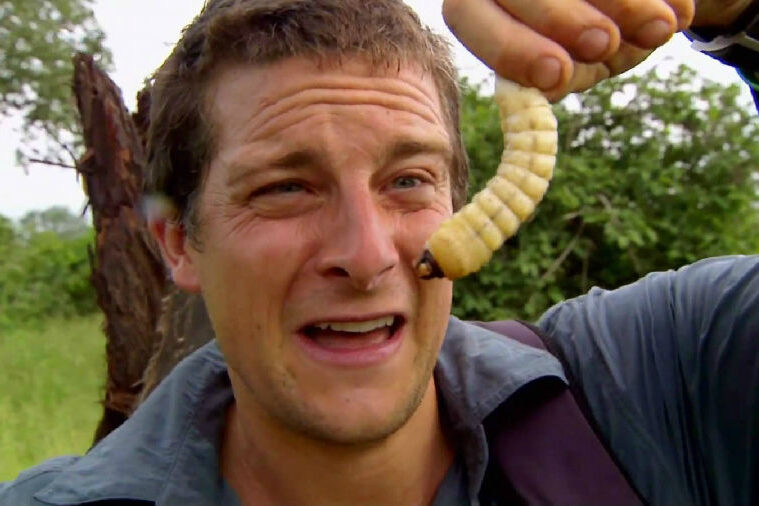
Nobody’s lining up for roasted beetles, but Bear swears by them. Insects like ants, grubs, and crickets are full of protein, and they’re usually easier to find than larger animals. “Bugs are nature’s fast food,” he joked in one episode. If it crawls and isn’t brightly colored or fuzzy, it’s probably edible. Survival often means setting pride aside and doing what works. Bugs may not taste great, but they’ll fuel your body better than roots or berries. In a real emergency, your energy matters more than your appetite. If Bear can snack on a scorpion, so can you.
4. Start Fire with Sparks

Watching Bear spark a fire with just a battery and steel wool makes you realize how useful basic materials can be. He’s also used flint, stones, and even eyeglasses to ignite dry tinder. “Fire is survival’s heartbeat,” he once said. It keeps you warm, cooks food, and boosts morale. Without it, your chances drop quickly in cold or wet conditions. Learning how to create fire without matches gives you power in any situation. It’s smart to keep a fire-starting tool in your bag. Practice at home so you’re not stuck freezing while fumbling in the woods for your first flame.
5. Climb with Safety Checks
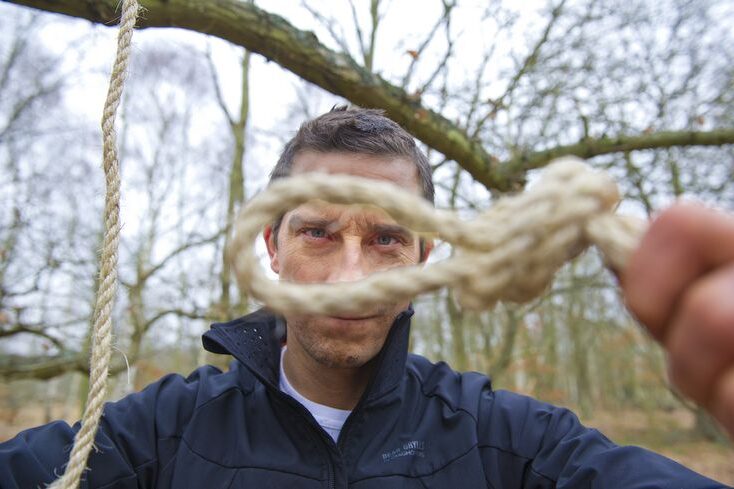
Bear never just climbs for the thrill. He tests rocks, anchors ropes securely and double-checks knots. “Complacency kills,” he often says. Scaling a cliff or crossing a deep gorge might look intense on TV, but it always starts with careful planning. He avoids loose ground, secures his footing, and relies on tested gear. Even if you’re just exploring rough terrain, these habits matter. Learning basic knot skills and carrying a small rope can save your life. In survival, rushing gets you hurt. Bear shows that being cautious and prepared is not weakness. It’s what gets you safely home again.
6. Navigate Using Nature
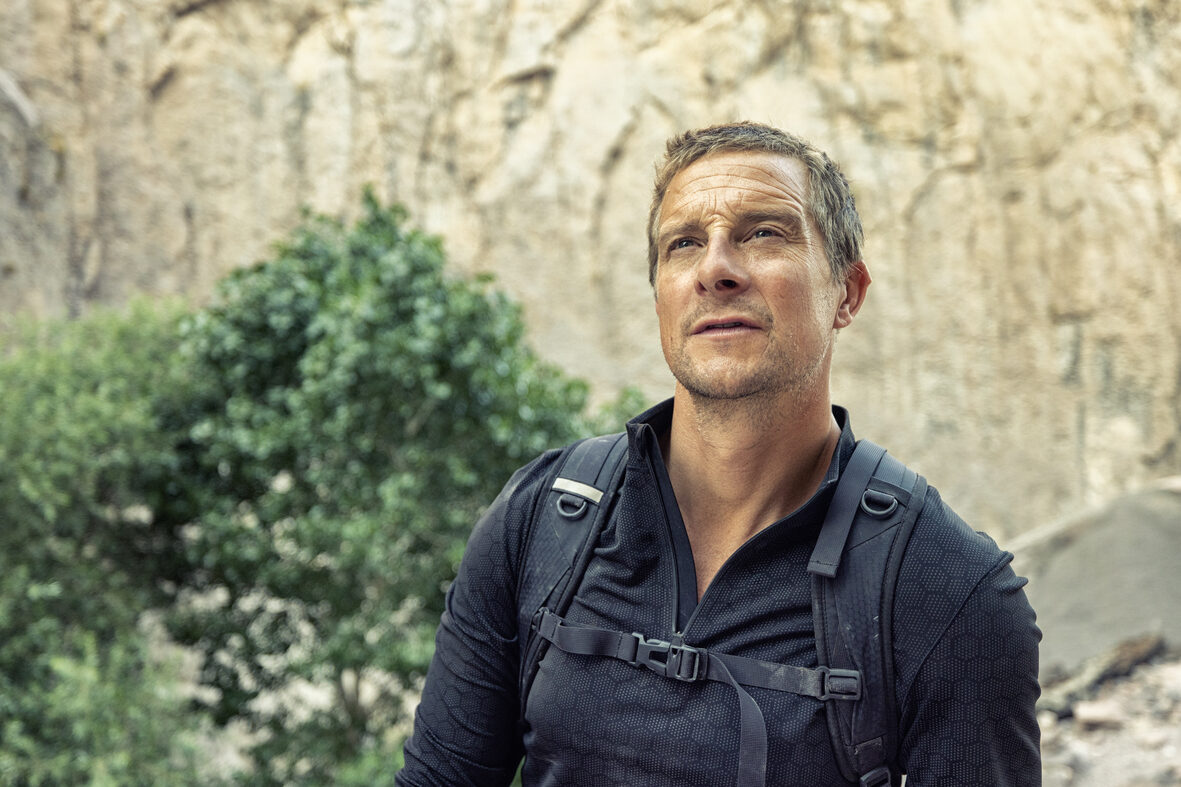
Without GPS or a compass, nature still shows the way. Bear uses the sun’s movement, star patterns, and even moss growth on tree bark to figure out direction. “The wild leaves signs everywhere,” he once told a scout group. It’s about observation and patience. In open areas, he uses shadow sticks to gauge east and west. At night, he finds the North Star. This old-school navigation won’t replace modern tools, but it’s incredibly useful when batteries die. The more you understand your surroundings, the less lost you feel. Even in everyday life, being more aware makes every step smarter.
7. Use Smoke to Signal
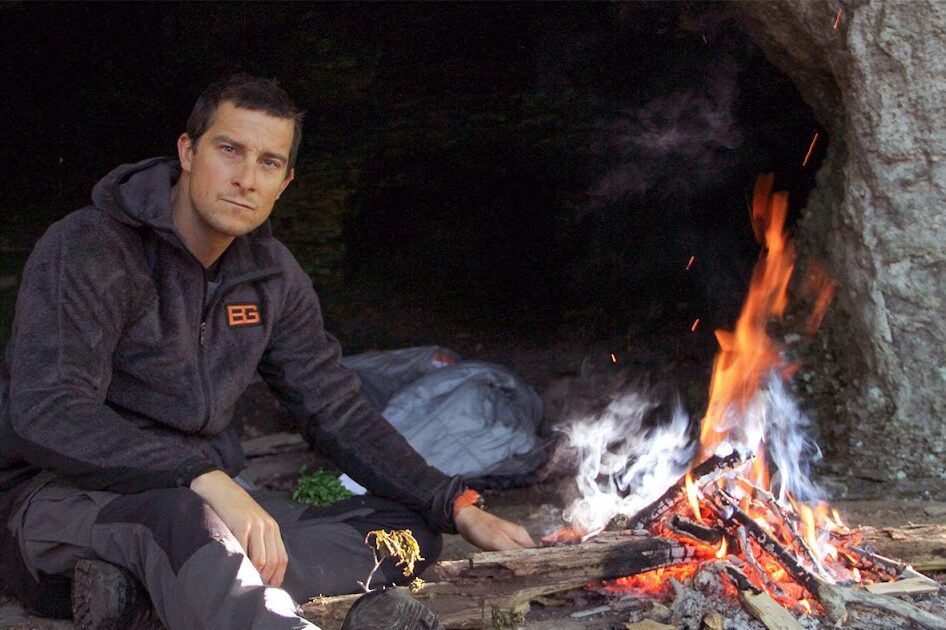
Getting found is just as important as surviving. That’s why Bear builds signal fires with dark smoke using green branches or rubbery materials. “Three puffs of smoke is a classic distress signal,” he shared in an episode. If you’re stranded, thick smoke can be seen for miles, especially from the air. Even if you don’t have cell service, fire gives you a voice. Bear stacks his fire carefully, then feeds it the right materials to make it visible. It’s a small move with big results. If you’re ever stuck, don’t just wait quietly. Make yourself seen with a good smoke trail.
8. Make Tools from Trash
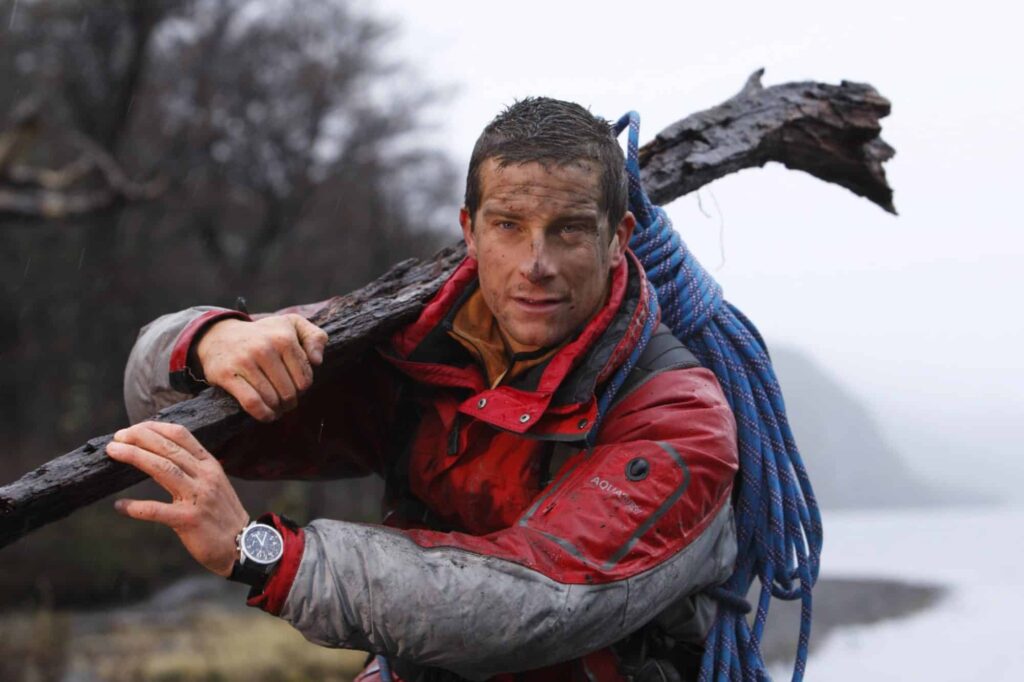
One man’s trash is Bear Grylls’ survival toolkit. He often repurposes broken gear, bones, or discarded metal to make hooks, spears, or digging tools. “In survival, everything has a second use,” he’s said. He once turned a broken ski into a shovel and used a soda can as a blade. You don’t need fancy tools when you understand what’s useful. Carrying duct tape, wire, or a multitool can open up endless options. Bear teaches us that creativity matters just as much as strength. Sometimes, it’s not about what you packed. It’s about what you noticed lying on the ground.
9. Cross Rivers Smartly

Cold rivers might look calm, but Bear always studies them first. He checks depth, current speed, and what’s underneath. “Most outdoor deaths happen near water,” he warned in an episode. He’ll strip gear to keep clothes dry, build a raft when needed, or walk miles for a safer crossing. Fast water can sweep you off your feet in seconds. Bear reminds us that it’s okay to wait or walk away. A shortcut that soaks your gear or risks your life isn’t worth it. When survival is at stake, smart patience beats bold moves. Knowing when not to cross is a win.
3 Survival Tricks You Should Never Try
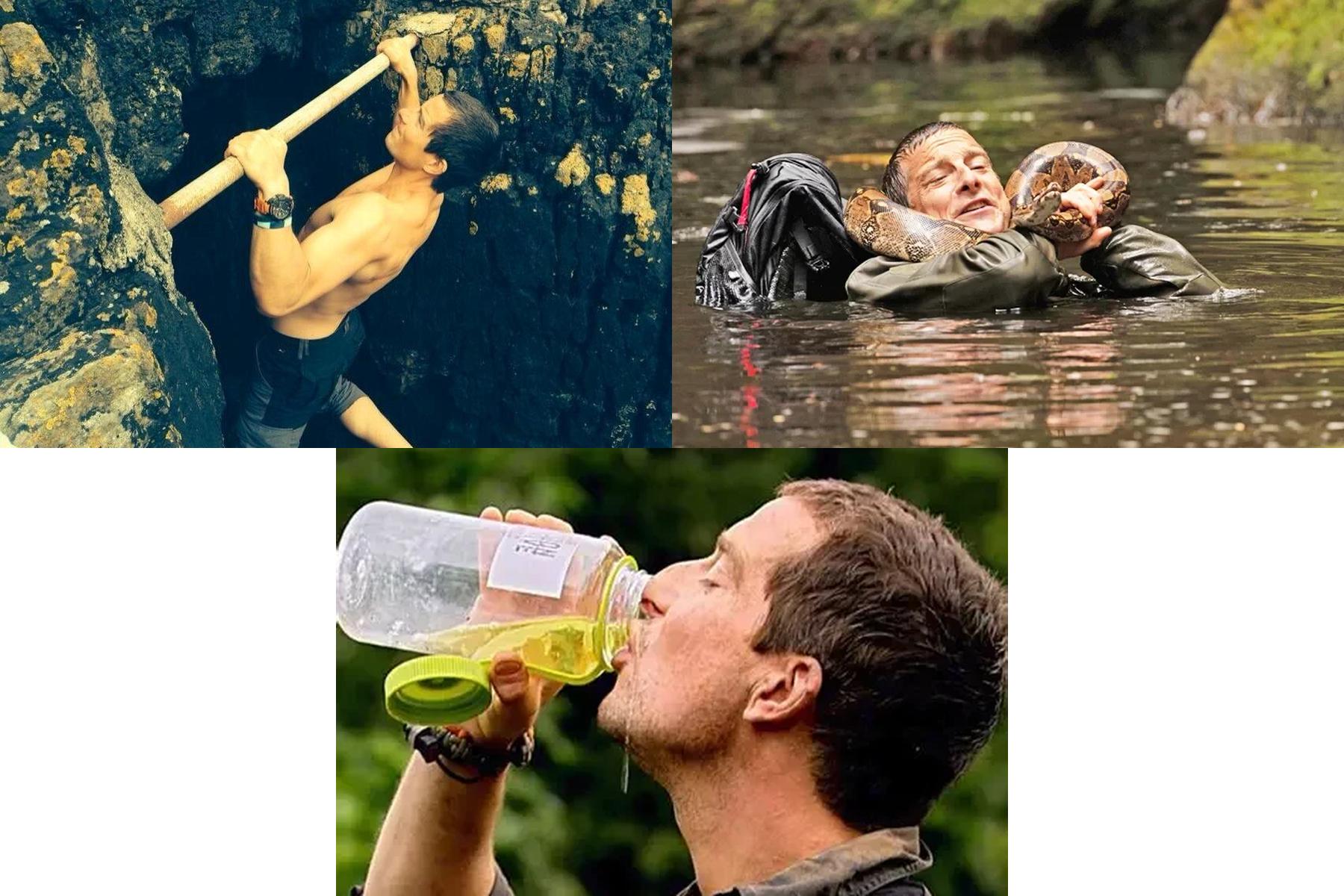
Of course, not everything Bear Grylls does on screen is meant to be copied. While some of his survival tricks are practical and even lifesaving, others are more about drama than safety. These next three might look impressive on TV, but experts, and even Bear himself, say you’re better off skipping them.
10. Don’t Drink Urine
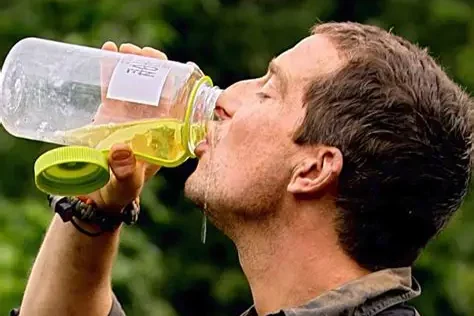
Yes, Bear drank urine on TV, but it’s not something you should copy. “It’s a desperate move and not without risks,” says Dr. Jeffrey Levy in Outside magazine. Urine contains toxins and salts your body already worked to expel. Drinking it puts extra strain on your kidneys and makes dehydration worse. While Bear did it to demonstrate options, even he says it’s a last resort. You’re better off finding shade, limiting exertion, or collecting dew. Don’t let dramatic scenes mislead you. Real survival is about sustainability, not stunts. Skip this one and focus on smarter water-saving techniques instead.
11. Avoid Risky Animal Stunts
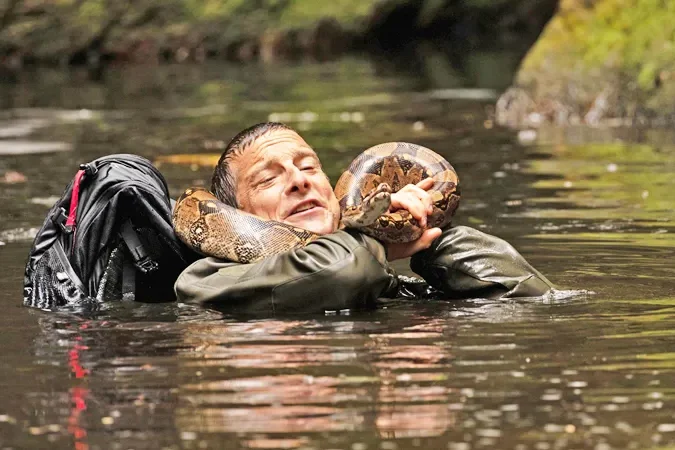
Bear has wrangled snakes and wrestled crocodiles, but that’s not a green light to try it. These scenes often involve experts and safety crews off-camera. “Avoiding danger is wiser than chasing it,” Bear said in an interview. Wild animals are unpredictable and often more afraid of you than you are of them. If you spot one, back away calmly. Getting too close just to feel brave can lead to injury or worse. Real wilderness wisdom lies in respect, not control. The next time you see wildlife, admire it from afar. That’s the kind of memory you actually want to keep.
12. Skip Dangerous Stunts
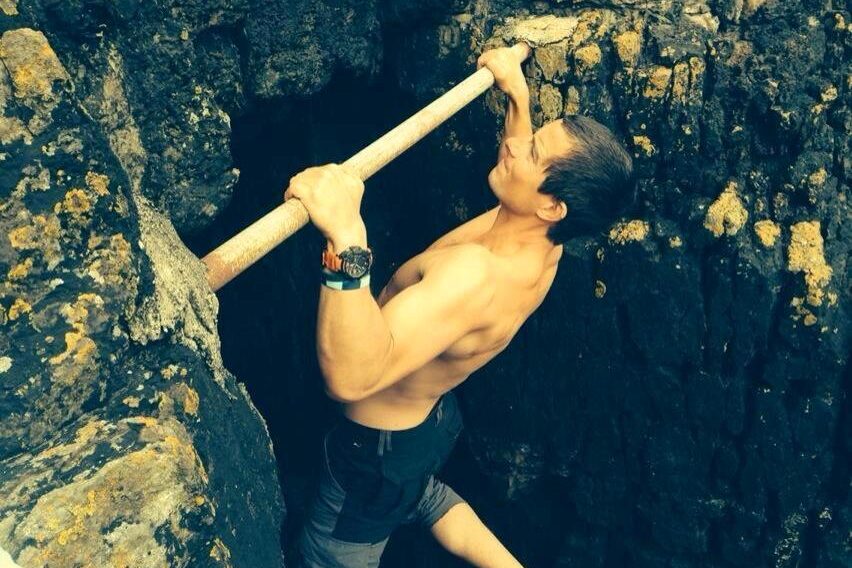
Bear’s cliff dives and waterfall climbs look amazing, but even he advises against copying them. These moments are highly choreographed with safety backups in place. “They’re not everyday survival tactics,” he admitted to Men’s Journal. Free climbing or leaping between rocks without proper gear is reckless. The wild is dangerous enough without added risks. Knowing your limits isn’t fear. It’s maturity. Bear’s real advice is about using your head, not chasing drama. If it looks epic on TV, it probably doesn’t belong in your weekend hike. The best survival move is knowing when to walk away and play it safe.
This story 9 Bear Grylls Survival Tricks That Actually Work (and 3 You Should Never Try) was first published on Daily FETCH


